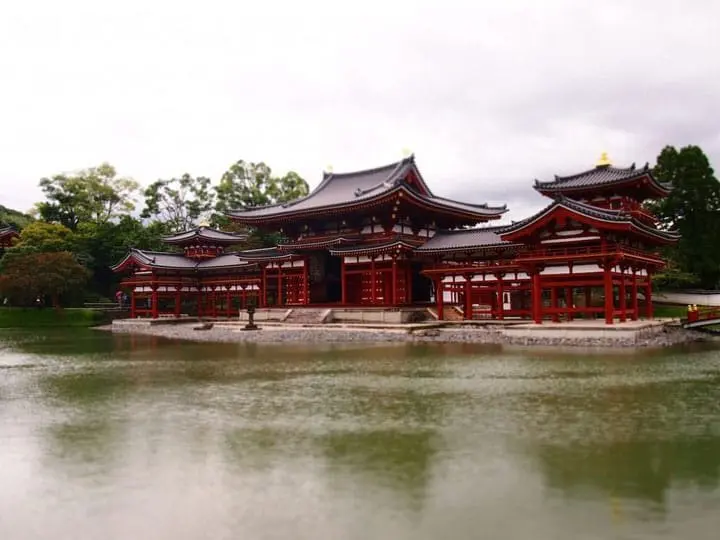The Heian Period - Japanese Encyclopedia

Today we look at the Heian period - a time of great cultural and literary achievement in Japanese history.
The Heian Period is one of the divisions in Japanese history that marks the almost 400 year span after Emperor Kanmu moved the capital to Heian-kyō (present day Kyoto) in 794 AD. It was predominately the Fujiwaras, a family of nobility, who governed Japan during this time period. In this era ruled by nobility, the impressive and elegant appearance of nobles is the first thing that comes to a Japanese person’s mind when they think of the Heian Period.
Byōdō-in Is a Symbol of the Heian Period
Japan had a diplomatic relationship with the Tang Dynasty (China of the time) during the beginning years of the Heian Period, but the relationship was severed around the 10th century. This separation led to Japan creating its own unique culture that departed from Chinese influence. A good example of this and the Fujiwara Clan’s grandeur can be seen in a temple known as the Byōdō-in (located in Uji, Kyoto Prefecture), which is also registered as a World Heritage Site.

From: Let's Go To Uji, Kyoto's Famous Tea Town!
Byōdō-in’s most spectacular feature lies in its construction: it is located in the middle of a pond, which adds the extra beauty of being able to see the temple reflect in the water’s surface to its already impressive appearance. The people of the Heian Period believed the Phoenix Hall portion of the temple was the Land of Happiness (one of the Buddhist forms of paradise) formed on Earth. The Japanese 10 yen coin also uses the image of the Phoenix Hall as part of its design. Enshrined inside of Phoenix Hall is a statue of Amithaba that was created by the famous sculptor Jōchō and is considered a Japanese national treasure.
The World’s Oldest Love Story was Created in the Heian Period
The kana writing system (which was the precedent for the Hiragana writing system) developed as the system of writing for women during the Heian Period. An exemplary literary work of the time that is still near and dear to Japanese today is The Tale of Genji (Genji Monogatari), which was written by the female author, Murasaki Shikibu.
The Tale of Genji's main character is the handsome nobleman, Hikaru Genji. In the story, he falls in love with a woman who resembles his mother who had passed away when he was a young boy. She also happens to be the very same woman his father remarried! Genji has love affairs with many women throughout the story, all the while his heart is actually with his stepmother... A stormy and dramatic ending awaits the reader of the world’s oldest full-length romance novel!
Women dressed in elegant and luxurious clothing appear in The Tale of Genji and it is the clothing of their time that became the predecessor of the Japanese kimono. One example of this is the twelve-layer ceremonial kimono known as the jūnihitoe, which was created around the mid-Heian period and was the formal clothing required of court women when appearing in public. The jūnihitoe was a remarkable sight to behold as the women wore twelve layers of the same shaped cloth, lending to a variety of colors peeking out from their collar and sleeves.
The jūnihitoe is still worn today in official ceremonies, such as when the Emperor of Japan is crowned or when noblewomen marry. If you ever want to experience what it feels like to be a noblewoman in the Heian Period, make your way to a place like Kyoto’s Nishijin-Ori Kaikan (Nishijin Textile Center) or the Heian Costume Experience Studio. Anyone can experience what it’s like to actually wear the jūnihitoe!
This is the official account of MATCHA's editorial department. Our articles feature useful travel information for visitors to Japan, from how-to guides to recommended places to visit.

































![[2026] Family Winter Trip to Suzuka Circuit! – For Both Day trips and Overnight Stays!](https://resources.matcha-jp.com/resize/720x2000/2025/12/26-254097.webp)
![[Northern Okinawa] 4 Recommended Cosmos Fields in Okinawa | Sunflowers and Cherry Blossoms in the Same Season!](https://resources.matcha-jp.com/resize/720x2000/2024/08/12-192028.webp)


